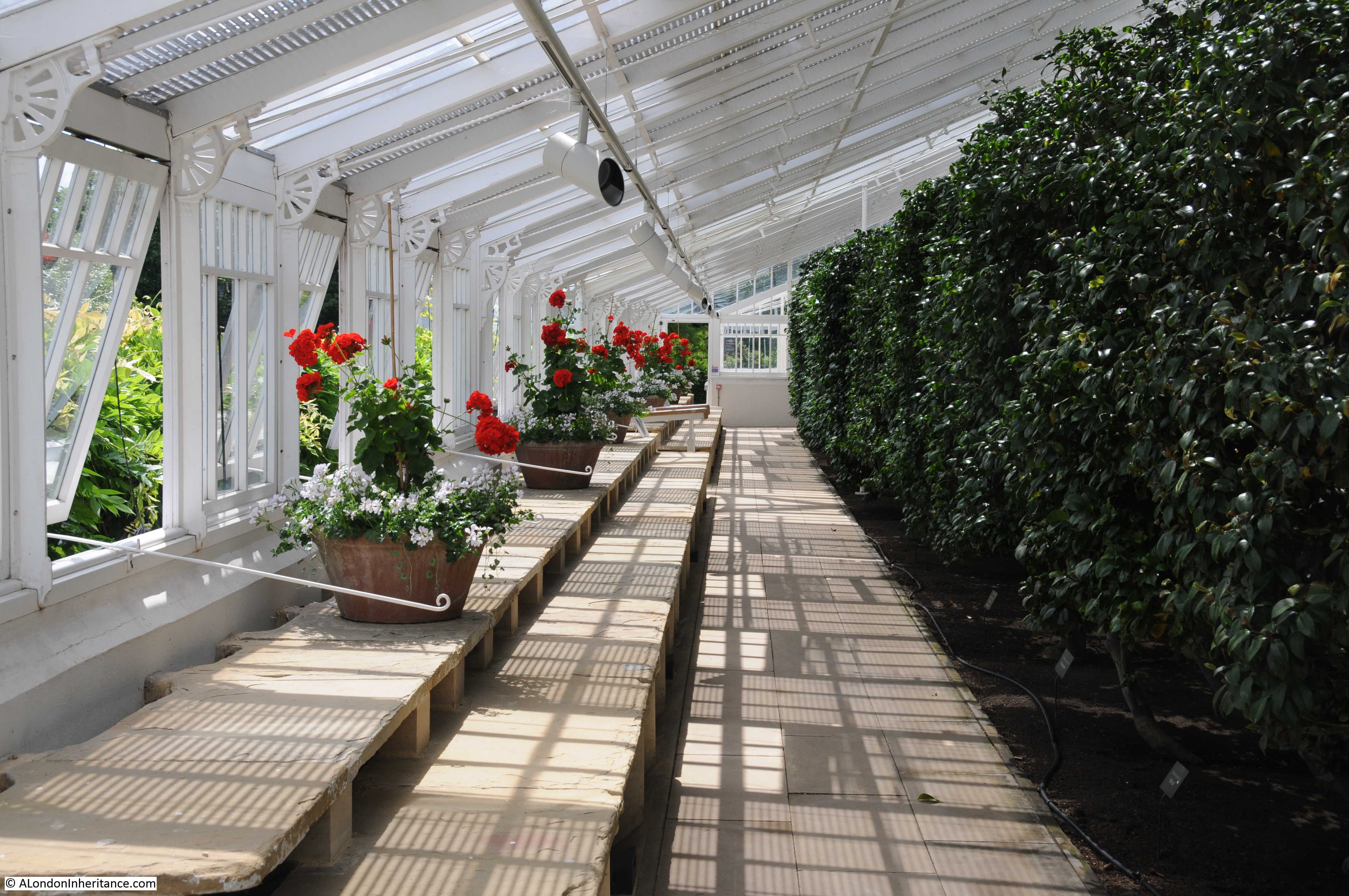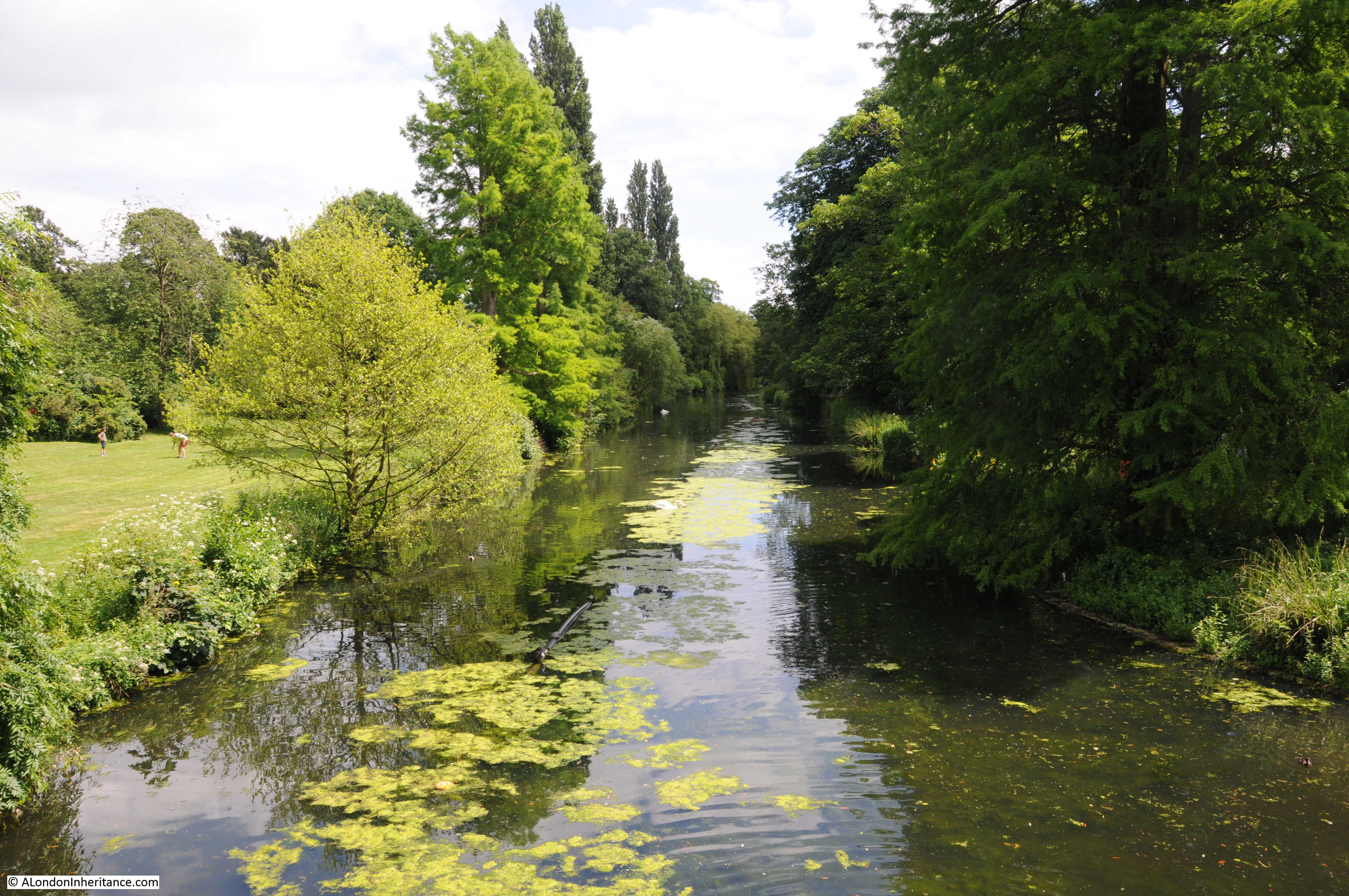Table Of Content

The most richly decorated space is the Blue Velvet Room, with hand-woven blue silk velvet walls and a faux-mosaic ceiling painted by Kent. The sumptuous Red Velvet Room has walls of crimson velvet setting off a collection of fine paintings, with ceiling panels painted by Kent. The gardens of Little Moreton Hall, an adjoining property to the east, were added in 1812, the hall itself being demolished.
Main menu
Originally the room would have contained around twenty seven paintings and access would have been restricted to Lady Burlington's closest friends.[citation needed] Prince of Wales swags and feathers can be seen in both rooms, possibly denoting the Villa as a Royal Palace. This central room, which provides access to the Gallery, Green and Red Velvet Rooms, would originally have been used for poetry readings, theatrical performances, gambling and small musical recitals (for example the composer George Frideric Handel (1685–1759) may have performed in this room. Handel lived with the family at Burlington House for two years when he arrived in England in 1712).
LONDON LIFESTYLE BLOGGER
Thanks to the Dog’s Trust charity you can also get free poo bags when walking in the gardens. Fast forward to the 5th Duke of Devonshire and his wife, Georgiana Duchess of Devonshire. The pair were responsible for extending Chiswick House into the property we see today, adding two wings and a rose garden. Georgiana was a great celebrity her day, famous for her gambling and consequent debts, her fashion sense and for her close friendships with Whig politicians. She called Chiswick House her “earthly paradise” and would spend more and more time here, throwing grand old parties for her Whig bosom pals here.
Lady Burlington's Bedchamber and Closet

In the gardens the 5th Duke began to remodel and further deformalise Burlington and Kent’s layout, with advice from Capability Brown’s assistant Samuel Lapidge. He also extended the grounds to the east in 1812 and there created a formal Italian Garden. Lord Burlington had two daughters but no sons, and after his death in 1753 Chiswick passed to his son-in-law the Marquess of Hartington, later 4th Duke of Devonshire. This is why most of the historic contents were ultimately moved to the Devonshires’ family seat, Chatsworth House in Derbyshire, where they remain.
On the portico leading to the Domed Hall is positioned a bust of the Roman Emperor Augustus. Augustus was regarded by many of the early 18th-century English aristocracy as the greatest of all the Roman Emperors (the early Georgian era was known as the Augustan Age). This link with the Emperor Augustus was reinforced in the garden at Chiswick through the presence of Egyptianizing objects such as sphinxes (who symbolically guard the 'Temple' front and rear), obelisks and stone lions. Inside the villa many references to the Roman goddess Venus abound, as she was the mother of Aeneas who fled Troy and co-founded Rome. On the forecourt to the villa are several 'term' statues that derive their forms from Terminus, the Roman god of distance and space. These are used as boundary markers, positioned in the hedge at set distances apart.

Chiswick House and Gardens with its neo-Palladian style villa and 65 acres of exquisite park makes for a wonderful day out in west London. Explore Lord Burlington’s house, visit the Kitchen Garden, meander around the lake teeming with birdlife, marvel at the 18th century landscaping by William Kent, and stop off for coffee or lunch in the Chiswick House Café. A visit to Chiswick House and Gardens means you’ll be stepping in the footsteps of Georgiana, Duchess of Devonshire, Handel, Queen Victoria and the Beatles. On 25 May 2023, Chiswick House re-opened with a programme celebrating 300 years of built and natural design. The programme delved into and reinterpreted three centuries of the estate’s history to help shape its future as a valuable asset of the whole community. Local artists, makers, schools volunteers and cultural partners all joined together to celebrate the house’s incredible history and looked for ways to keep its story alive.
When was this home built and last sold?
By the 20th century, the House and Gardens were in decline and in 1929 the reduced estate was sold to Middlesex County Council. In 1948, ownership of the house passed to the Ministry of Works, which embarked on a restoration campaign aimed at returning the villa to its original size and design and the gardens to their original layout. In 1725 a fire damaged the existing house at Chiswick, and this may have given Burlington a pretext for adding a new building to his house – the villa now known as Chiswick House. This villa was built between 1726 and 1729 and the exterior design was mostly the work of the earl himself.
Quick links
The tripartite series of rooms overlooking the garden at the rear of the Villa are collectively known as the ‘Gallery Rooms’. The distinctive apses here are derived from the Temple of Venus and Roma - the same source that Inigo Jones utilised when he refaced the west front of old St. Paul's Cathedral before its destruction in 1666.[citation needed]In the four niches were placed classical mythological statues of a Muse, Mercury, Apollo and Venus. This Gallery was designed as a statue Gallery and if in Italy this series of rooms would have been a loggia (a room open to the elements on one or more sides).
Rooms on the ground floor
The cantilevered concrete also did not stand up well to the area's earthquakes. Disillusioned by the costs of construction and maintenance, Barnsdall donated the house to the city of Los Angeles in 1927[8] under the stipulation that a fifteen-year lease be given to the California Art Club for its headquarters. The club was there until 1942 when the house was almost demolished.[9] The house has been used as an art gallery and as a United Service Organizations (USO) facility over the years. Beginning in 1974, the city sponsored a series of restorations, but the structure was damaged in the 1994 Northridge earthquake. The studio renovated the Grade-II listed building – the only factory designed by the architect – into a "premium workspace" for property developer Dorrington.
De La Soul latest band to be announced for Pub in the Park Chiswick - Chiswick Calendar Features - The Chiswick Calendar
De La Soul latest band to be announced for Pub in the Park Chiswick - Chiswick Calendar Features.
Posted: Tue, 13 Feb 2024 08:00:00 GMT [source]
This was possibly due to Burlington's intense dislike of the Gothic style which he regarded as barbaric and backward. Evidence for this belief was provided through his translation into English of Homer's cornerstones of European literature The Iliad and The Odyssey which provided brief glimpses of Greek gardens which gave validation to Burlington's belief in the naturalistic appearance of Roman gardens. Theatrical aspects were added to the gardens by Kent, who studied the theatre and masque designs of Inigo Jones for the Stuart Court,[4] which were owned by Lord Burlington and housed within his villa. Burlington, Kent and Pope were informed by the writings of Anthony Ashley Cooper who advocated "variety" in a garden, but not complete deformalisation.
Water is meant to flow from a pool in the courtyard through a tunnel to this inside moat, and out again to a fountain. Lady Burlington formed a close friendship with Kent who she affectionately referred to as ‘Kentino’. He helped her to redecorate the Garden Room on the ground floor of the house, now known as the Summer Parlour.
Part of the floor of this building was laid out in imitation of a Roman mosaic which English Heritage archaeologists in 2009 dated to the mid 18th century. Next to the remaining Deer Houses stands the Doric column on which was placed a statue of the Venus di' Medici. Kent added a cascade (a symbolic grotto), inspired by the upper cascade of the gardens of the Villa Aldobrandini.[7] Kent added a flower garden, an orchard, an aviary (which included an owl) and a symmetrical planned arrangement of trees known as the "Grove". To the side of the Grove was a patte d'oie, or 'Goosefoot', three avenues which terminated by buildings including the 'Bagnio' (or Casino, designed by Lord Burlington and Colen Campbell) in 1716, the 'Pagan Temple' (designed by the Catholic Baroque architect James Gibbs) and the Rustic House (designed by Lord Burlington). This room also contained four heavy gilded tables carved with Kent's characteristic baroque shells and accompanied with central carved lion masks (complementing the lion heads in the frieze). These chairs had pediment backs which matched the four stone triangular pediments in this room.
Being in a big top comes with expectations and the bevy of high-flying acts do not let us down. Duo Aerial Luna superbly use a large hoop as a platform on which to perform some impressive acrobalance. Ballerina Marika Ashley Gould and partner Miana Luna create strong symmetrical shapes with both taking turns as base and flyer. Joining them up in the air are Alex Michael who expertly jumps from one trapeze to another and Antony Cesar (pictured) on the aerial straps. Each makes wonderful use of the tent’s great height to explore the space and – operating sans net and sans harness – add a delicious layer of danger. Planted in 1745, neither Kent not Burlington could have predicted how massive these trees would become.
Today, several portraits of the Savile family can be viewed here and in the Bedchamber closet. One painting of note is of the poet Alexander Pope, painted by his good friend and fellow drinker William Kent. The military theme in these paintings may possibly be a reference to Lord Burlington's status as a Knight of the Order of the Garter or his position as head of the 'Gentlemen Pensioners' (symbolic bodyguards to the King). Alternatively these paintings may be of a Masonic motivation[24] as in the 18th century it was believed that the Crusader Military orders, such as The Poor Knights of the Temple of Solomon (Knights Templar) and the Knights of St John (Hospitallers), were in some way inexplicably linked. These higher 'Chivalric and Historic' orders met in 'encampments' rather than lodges and were predominantly Christian in their outlook and composition. At the rear of the Villa were positioned 'herm' statues that derive from the Greek god Hermes, the patron of travellers and thus are welcoming figures for all who wish to visit Lord Burlington's gardens (Lord Burlington's gardens at Chiswick were the most visited of all London villas.[citation needed] A small entrance charge applied).
However, the decorative cornice at Chiswick was derived from a contemporary source, that of James Gibbs's cornice at the Church of St Martin-in-the-Fields, London. The finely carved Corinthian capitals on the projecting six-column portico, carved by John Boson, are derived from the Temple of Castor and Pollux in Rome.[56] The inset door, projecting plinth and 'v'-necked rusticated vermiculation (resembling tufa) were all derived from the base of Trajan's Column. To reinforce this link, two full-length statues of Palladio and Jones[a] are positioned in front of these sections of wall. Palladio's influence is also felt in the general cubic form of the villa with its central hall with other rooms leading off its axis.

No comments:
Post a Comment